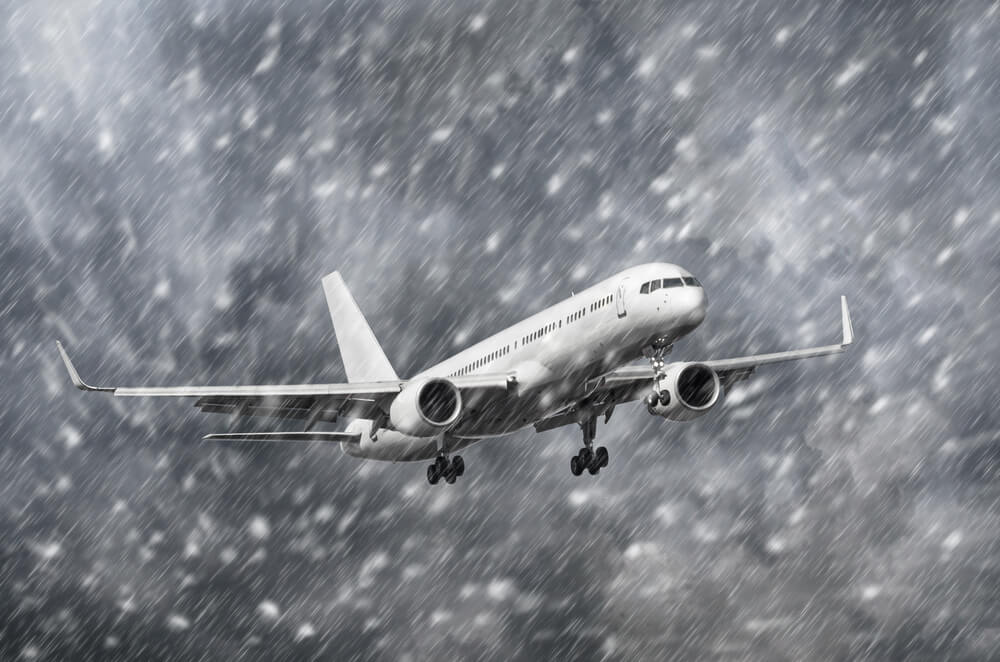After Storm Ciara brought windy weather to Europe, several videos circled the internet showcasing some hold-on-to-your-seats type of landing, with some flight crews deciding that it is not going to work out and engaging what is called a go-around. The procedure, while fairly uncommon, is still used in practice whenever a landing attempt can potentially go wrong for one reason or another.
While to the naked, non-aviator, eye it might look like a dangerous and adrenaline-inducing procedure, the number one goal of a go-around is to actually ensure the safety of everyone on board.
So, why and how are go-arounds done?
Breaking down the reasons for a go-around
Primarily, there are a few reasons why a go-around is engaged by the pilots:
1. Weather
The number one and the most common reason is the weather, according to Flight Safety Foundation, which released a toolkit named Approach and Landing Accident Reduction, designed to reduce the number of various incidents during landing and take-off procedures.
Weather conditions, including visibility, wind gusts and speed, are under close scrutiny during landings, especially if flights are conducted in storm-affected areas. For example, if the wind speeds during approach are too high, pilots will decide to go-around, making sure that the safety of every passenger on board is ensured.
This Tui decided to go around. #StormCiara #manchesterairport #Ciara #Ciarastorm pic.twitter.com/UsTxAy1SMq
— (@SyWarbrick1) February 9, 2020
2. Coming in too hot
Coming in too hot could be described as the situation in which flight crew has failed to properly stabilize the aircraft prior to the approach. The toolkit by Flight Safety Foundation indicates that if a landing is conducted by using instrument flight rules (IFR) under instrument meteorological conditions (IMC), meaning primarily relying on instruments on board to land the aircraft, such criteria, as the correct flight path, speed and a completed checklist, among others, need to be met by 1,000 feet above airport elevation. If a landing is conducted using visual flight rules (VFR) under visual meteorological conditions (VMC), the criteria are to be met by 500 feet above airport elevation.
“An approach that becomes unstabilized below 1,000 feet above airport elevation in IMC or below 500 feet above airport elevation in VMC requires an immediate go-around,” as outlined in the toolkit by Flight Safety Foundation.
3. Technical difficulties
However, the coming in too hot approach could also be a result of a technical problem, including such events as flaps not deploying properly or landing gear not lowering at the correct altitude. If any technical issues occur during the approach, the pilots are advised to engage a go-around and refer to their quick reference handbook (QRH) that has all the emergency checklists, which will help during such emergency situations.
4. Runway incursions or obstacles on the runway
Another, while uncommon, the reason for a go-around could be presented by an obstacle on the runway or, as the official lingo goes, runway incursion. A runway incursion is usually the result of an aircraft moving onto the runway without clearance from Air Traffic Control (ATC), such as this example from New York John F. Kennedy International Airport (JFK) in January 2020.
Another reason, especially at congested airports, is the lack of minimal separation between aircraft. The guidelines laid out by the Federal Aviation Administration (FAA), for example, indicate that when aircraft are landing on the same runway, they need to be separated by at least 6,000 feet if the one of the aircraft is a Category III (all other planes, usually used in commercial aviation, as defined by the FAA) aircraft require at least 6,000 feet.
If the minimum distance cannot be maintained, pilots abort the landing procedure and initiate a go-around to avoid contact with an aircraft on the ground. In 2017, potentially one of the scariest close calls happened when an Air Canada Airbus A320 almost landed on the taxiway at San Francisco International Airport (SFO), where several other aircraft were holding before taking-off towards their destinations.
So, these are some of the reasons why pilots initiate a go-around procedure. But how do flight crews perform a go-around?
Initiating a go-around
Even before getting on an aircraft, flight crews gets on the aircraft, they are briefed on their flight path if a go-around occurs. The potential route of a go-around is also loaded onto the Flight Management System (FMS).
When the conditions are not right for one reason or another to complete the landing, the pilots press the Take-off/Go-Around (TO/GA) button that allows increasing the thrust of the aircraft’s engines and also disconnects the autopilot. Flaps are also set to Flap 15. As the aircraft pitches up from the pilots’ commands and is climbing, the landing gear is raised, with Flaps going from 15 to five, one to being raised completely.
With the plane positioned between 2,000 or 3,000 feet above sea level, the pilots start holding altitude and decide on their next course of action: whether to attempt another landing, fix a technical issue if there is one, or to divert to a different airport.

